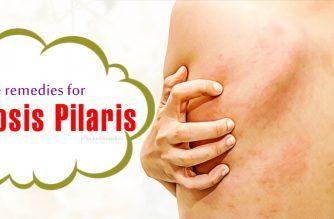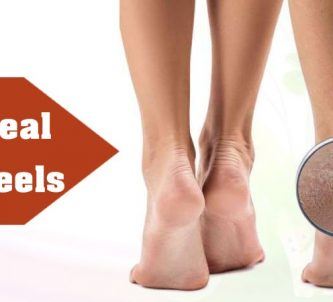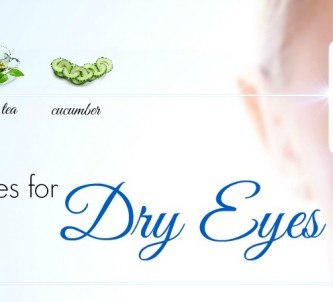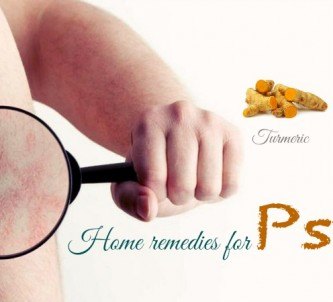Contents
Any defect on the skin makes you less perfect in the eyes of yourself and others. Only a pimple ruins your appearance, so what will happen if you develop keratosis pilaris on your face, neck, arms, or back? This skin problem is a nightmare for lots of people when it exists with many ugly traces on the skin such as rough, red, or tan bumps. To make this situation no longer an obsession, continue reading and referring to top 16 doctor-approved natural home remedies for keratosis pilaris on the face, neck, and body in adults & children and some small tips proposed in this article on Effective Remedies.
The recipes we've focused on are traditional home remedies that can be used alongside usual medical treatment. Always consult your doctor about recurrent infections, and if symptoms are getting worse rather than better.
16 Home Remedies For Keratosis Pilaris On Face, Neck In Adults & Children
I. Facts About Keratosis Pilaris
1. What Is It?
Keratosis pilaris or follicular keratosis is a chronic, benign, and common skin disease characterized by thick keratin layer in the hair follicles, forming papules that protrude from the skin, giving a rough, “chicken skin” condition. This disorder occurs in all ages, genders, and races. It is seasonal changes, which improves in summer and becomes severe in winter due to dry skin accompanied by rubbing on clothes[1]. It may be just ordinary keratosis pilaris but may also be one of the symptoms of some other skin diseases such as ichthyosis vulgaris, pityriasis rosea, and atopic dermatitis. Normally, keratosis pilaris does not influence physical health or live, it mainly causes unsightly, affecting the quality of life[2].
2. What Causes It?
The cause of keratosis pilaris is not fully known. According to experts, it can be inherited or acquired and is more common in twins and siblings. The pathogenesis is due to the excessive formation and accumulation of keratin in the hair follicles, resulting in bumps on the skin surface. When you look closely at the bumps, you will see the small inner hair that cannot grow up, thereby leading to mild inflammatory reactions[3].
EffectiveRemedies Partner Solutions

Ask a Doctor Online and Get Answers in Minutes, Anytime!
Have medical questions? Keep asking questions to a Verified Expert until you get the answer you need.
3. Statistics
- The percentage of female cases is higher than that of male.
- The onset of the disease is usually in the first 10 years of life, and the symptoms may get worse in puberty.
- Keratosis pilaris is typical in childhood and adolescence, but still likely comes about in infants, toddlers, and adults. The incidence is 50 to 80 percent in adolescents and 40 percent in adults[4].
- 30 to 50 percent of patients with keratosis pilaris is because of heredity.
II. Effective Remedies
All recipes below are suitable for the whole body. You can adjust the amount of each ingredient proportionally for different parts.
A. Home Remedies For Keratosis Pilaris In Kids
These eight remedies are appropriate for kids because they are gentle and do not bring about irritation to the immature skin. Adults, especially those who have sensitive skin, can also choose these remedies for their treatment process.
1. Rice Bran
Why
Rice bran contains mostly B vitamin family such as B1, B2, B6, along with vitamin E and some micronutrients like biotin, niacin[5]. All of which aid in battling free radicals, removing abundant sebum, restoring skin cells, and healing skin damage caused by inflamed pores[6] [7]. Hence, it is a powerful ingredient for keratosis pilaris.
Remedy 1: Rice Bran & Lemon
This is an effective keratosis pilaris remedy because rice bran combined with antibacterial and anti-inflammatory properties of lemon will repel the keratinization cells.
What do you need
- Rice bran powder
- Lemon juice
How to do
- Mix 4 tablespoons of rice bran powder with 2 tablespoons of lemon juice to form a thick paste.
- Apply the mixture to the affected areas after cleansing.
- Massage in circular motions for 5 minutes and leave it on for 30 minutes.
- Rinse with water.
- Do this 3 to 4 times a week for at least 3 months.
Warnings/Side effects
Lemon is acidic, so if you or your child has any irritation sign after the first use, switch to a mixture of rice bran powder and warm water instead.
Remedy 2: Rice Bran & Honey
Honey has calming effects that help soothe the skin. This combination is also famous for keratosis pilaris treatment for years.
What do you need
- Rice bran powder
- Honey
How to do
- Mix equal amounts of rice bran powder and honey. You can add some drops of lemon juice or water if the mixture is too thick.
- Apply it to your skin for 20 minutes before rinsing off.
- Repeat this 3 times a week.
Warnings/Side effects
Make sure to choose real raw or organic honey for the recipe for the best result.
2. Oatmeal
Why
Oatmeal has anti-inflammatory abilities that soften and ease red and itchy bumps[8]. It also acts as a natural scrub that peels dead skin cells, at the same time nourishes and hydrates the skin thanks to its saponin content.
Remedy 1: Oatmeal Scrub
What do you need
- Oatmeal powder
- Warm water or warm milk
How to do
- Blend 2 tablespoons of oatmeal powder in 3 tablespoons of warm water or warm milk.
- Rub it on your skin in circular motions for a couple of minutes and let it sit for 15 more minutes.
- Wash off with water.
- Do this 2 to 3 times a week.
Remedy 2: Oatmeal Bath
What do you need
- Oatmeal powder
How to do
- Dissolve one-third cup of oatmeal powder in warm bath water.
- Soak in for 15 minutes and shower with clean water.
- Perform this at least 3 times a week to manage body keratosis pilaris.
Warnings/Side effects
No side effect of oatmeal when applied to the skin.
3. Coconut Oil
Why
Coconut oil has a wide range of health, hair , and skin benefits. It provides anti-inflammatory and antibacterial properties that deal with skin inflammation[9]. Apart from that, its fatty acids help soften and moisturize the skin[10], making it become one of the most wonderful home remedies for keratosis pilaris .
Remedy 1: Only Coconut Oil
What do you need
- Coconut oil
How to do
- Apply coconut oil directly to the affected skin frequently during the day.
- You can combine using coconut oil topically with consuming it to speed up recovery.
Remedy 2: Coconut Oil & Brown Sugar
What do you need
- Coconut oil
- Brown sugar
How to do
- Warm up 2 tablespoons of coconut oil and add 1 tablespoon of brown sugar to it and mix well.
- Massage the affected areas with the mixture for a few minutes.
- Wash off with water.
- Rehash every day.
Warnings/Side effects
Coconut oil is safe to use on the skin.
4. Yogurt
Why
Lactic acid in yogurt helps exfoliate impurities and prevent the buildup of keratin on the skin[11]. Its probiotics and other fatty acids keep the skin away from drying after exfoliating and make it supple.
What do you need
- Plain yogurt
How to do
- Spread a layer of plain yogurt on the skin with keratosis pilaris.
- Leave it on until dry naturally.
- Cleanse thoroughly afterward.
- Repeat this 2 to 3 times weekly.
Warnings/Side effects
No side effect has been reported with the use of plain yogurt on the skin.
5. Aloe Vera
Why
Aloe vera is beneficial for many skin issues, including keratosis pilaris as it has cooling, soothing, and healing effects. This herb also possesses loads of essential vitamins, minerals, enzymes, and anti-inflammatory qualities that avoid further irritation[12].
What do you need
- Aloe vera gel
- Cotton pad
How to do
- Peel an aloe vera leaf and scoop the gel out.
- Apply aloe vera gel to the affected areas and let it sit for 10 minutes.
- After waiting time, lightly massage for a few minutes, then wipe off with a cotton pad.
- You do not need to re-wash with water.
- Repeat the procedure twice to thrice a day.
Warnings/Side effects
Aloe vera is safe to apply to the skin as a medical method.
B. Home Remedies For Keratosis Pilaris In Adults
Only adults or adolescents over 16 years old should practice the following remedies to minimize unwanted side effects.
1. Epsom Salt
Why
Epsom salt contains minerals that soften hard skin, remove dirt, and promote a healthy skin complexion. Scrubbing with Epsom salt will help unclog and cleanse pores, reducing inflammation caused by keratin layers. Besides, having an Epsom salt bath will add to its benefits sleep improvement and stress relief effects[13].
Remedy 1: Epsom Salt Scrub
What do you need
- Epsom salt
- Olive oil
How to do
- Mix 3 tablespoons of Epsom salt with 1 tablespoon of olive oil.
- Use the mixture to scrub your skin once or twice a week.
Remedy 2: Epsom Salt Bath
What do you need
- Epsom salt
How to do
- Fill in a bathtub with warm water and add to it 1 cup of Epsom salt.
- Soak in for 20 minutes before rinsing with water.
- Pat dry your body and moisturize with coconut oil or lotion.
- Bathe twice a week.
Warnings/Side effects
Patients with heart disease, high blood pressure, and diabetes must not list Epsom salt bath as their long-term remedy for keratosis pilaris. The mineral that occupies the largest proportion in the composition of Epsom salt is magnesium. Your skin can easily absorb this element, and too much of it present in the body will cause blood sugar fluctuations and affect the functioning of internal organs.
2. Baking Soda
Why
Baking soda is a natural exfoliant that removes dead skin cells blocking the pores, thus reducing keratin bumps. It also regulates blood circulation and has whitening properties, which give you a smooth and glossy appearance[14].
What do you need
- Baking soda
- Water
How to do
- Mix 3 tablespoons of baking soda with a moderate amount of water.
- Apply it to your skin and massage for 5 minutes.
- Wash off with water.
- You can do this method every day.
Warnings/Side effects
Although it is rare, baking soda still causes irritation reactions to people who are allergic to it or have sensitive skin. Symptoms include redness, rashes, and burning.
3. Olive Oil
Why
Olive oil is rich in vitamin E – a potent antioxidant agent keeping the skin youthful and healthy, and works to supplement moisture to it[15]. The combination of olive oil, sugar, and honey, which forms a skin scrub, makes this oil another good remedy for keratosis pilaris.
What do you need
- Olive oil
- Sugar
- Honey
How to do
- Combine 2 tablespoons of olive oil with 2 tablespoons of sugar and 1 tablespoon of honey.
- Rub it on your affected skin for a few minutes and wash off.
- Do this once to twice a week.
Warnings/Side effects
It is safe to put olive oil on your face.
4. Tea Tree Oil
Why
Tea tree oil is a host of anti-inflammatory, antibacterial, antiseptic, and antifungal properties that offer several benefits on beauty and general health. Its anti-inflammatory abilities play a vital role in alleviating keratosis pilaris and deeply purifying the skin[16].
What do you need
- Tea tree oil
- Coconut oil
How to do
- Dilute 2 drops of tea tree oil in 10 drops of coconut oil.
- Massage your skin with the oil mixture, then clean with water.
- Reduplicate this during the day.
Warnings/Side effects
Tea tree oil is usually safe for people to put on their skin, but it can irritate allergic ones. You have to thin out tea tree oil before applying because raw oil will lead to dryness, itching, swelling, and burning.
5. Lemon And Lavender Essential Oils
Why
- Benefits of olive oil on keratosis pilaris skin has been mentioned above.
- Lemon essential oil is an excellent cleanser since it has antibacterial and antifungal characteristics. These will fight against bacteria and fungi that worsen your skin condition[17]. This oil also contains antioxidants protecting the skin from harmful environmental factors[18].
- With antiseptic and antibacterial activities[19], lavender essential oil assists lemon essential oil with keeping the skin infection-free. It also softens hard skin and accelerates the healing process of keratosis pilaris.
What do you need
- Lemon essential oil
- Lavender essential oil
- Olive oil
How to do
- Create a mixture with 2 to 3 drops each of lemon and lavender essential oil, and 2 tablespoons of olive oil.
- Massage it on the skin for 3-5 minutes.
- Let it dry without any subjective impact.
- Repeat the process twice daily.
Warnings/Side effects
- Lemon essential oil does not seem to deliver any side effect. But similar to other essential oils, children, pregnant and breastfeeding women should not use it to avoid allergic reactions.
- Lavender essential oil is a skin-friendly ingredient; it causes irritation in very minor cases.
6. Apple Cider Vinegar
Why
Apple cider vinegar (ACV) with its exfoliant nature does a great job in relieving keratosis pilaris as it abolishes excess dead skin cells and keratin. The acidity of ACV creates a detrimental environment for bacteria growth, eliminating inflammations and infections[20].
What do you need
- Apple cider vinegar
- Coconut oil
- Honey
How to do
- Combine the same quantities of ACV and coconut oil and add 1 teaspoon of honey to it.
- Apply to the skin with keratosis pilaris and leave it on for 10 to 15 minutes.
- Rinse off with water.
- Perform the remedy every day.
Warnings/Side effects
Direct application of ACV, especially the vinegar with a high acid content, on the skin may cause redness, rashes, and burns.
7. Witch Hazel
Why
Witch hazel is an astringent holding anti-inflammatory and antibacterial properties that help diminish inflammations and kill bacteria remaining on your skin or inside your pores[21]. It also removes all impurities, oil, and nourish the skin thanks to its moisturizing abilities. For those reasons, witch hazel is an option that you cannot ignore when looking for the best home remedies for keratosis pilaris.
What do you need
- Fresh witch hazel leaves
- Water
How to do
- Crush some fresh witch hazel leaves in a bowl and slowly pour water to form a medium consistency paste.
- Cover the affected areas with this paste and let it stay for 5 to 10 minutes.
- Cleanse with water and do every day.
- Alternatively, you can use witch hazel lotion or tincture.
Warnings/Side effects
In most adults, witch hazel is safe when applied to the skin. Some people with sensitive skin may encounter irritation.
III. How-To Tips
1. Tips For Adults – Do Exfoliation
Not only people with keratosis pilaris, exfoliation is a must in the skin care routine of everybody. Exfoliating with a loofah or foam pad once to twice a week will help rub down dead skin and keratinization cells and open clogged pores to purge dirty substances. You will notice changes after 3 to 4 weeks maintaining exfoliation habit.
2. Tips For Both Adults & Kids – Moisturize
Keratosis pilaris is associated with dry skin, so moisturizing is extremely necessary. Applying moisturizers to your affected skin every day will significantly make the existing symptoms better. Try to go with urea-based or water-based moisturizers, and avoid those being rich in oil.
You can consider purchasing a humidifier to add more moisture to your skin during dry seasons.
3. Tips For Both Adults & Kids – Use Mild Soaps Or Shower Gels
A mild soap or shower gel will cleanse and soothe your skin without irritating it. It is best to choose products that are natural and chemical-free, and those containing vitamin E, lavender oil, coconut oil, or jojoba oil to fully nourish and hydrate the skin, reducing the severity of keratosis pilaris.
4. Tips For Both Adults & Kids – Eat Proper Foods
Researchers have found that keratosis pilaris somehow is related to vitamin A deficiency. A healthy diet with vitamin A, vitamin E, beneficial fats, and antioxidants will help a lot in getting rid of this skin disorder. To illustrate, green leafy vegetables, avocado, sweet potato, salmon, and more all supply essential nutrients that skin needs to repair and retain healthily.
IV. Frequently Asked Questions
1. Can We Prevent Keratosis Pilaris?
It is difficult to prevent keratosis pilaris if it is inherited as it can come at any stage of your life. If none of your family members suffers from this condition, prevent acquired keratosis pilaris from the start with skin care on a regular basis to ensure that your skin never turns too dry.
2. Is Keratosis Entirely Curable?
At present, there is no specific treatment for keratosis pilaris. Skin care and treatment methods work to improve the situation at different levels. However, to be effective, these methods should be sustained.
3. What Can We Use To Treat Keratosis Pilaris Besides Natural Remedies?
The most important thing to remember when curing keratosis pilaris is to avoid dry skin condition progressing. Therefore, the first step in utilizing non-natural remedies for keratosis pilaris is to apply lotions and emollient creams regularly. After that, pay attention to these directions:
- Topical medications containing lactic acid, salicylic acid, and urea: Used to soften and heal non-inflammatory
- Topical vitamin A derivatives like tretinoin, adapalene, or tazarotene: Used once a day from 8 to 12 weeks when patients do not respond to products above. These act to reduce redness, itching, and roughness.
- Topical corticoid: Used for a short period of 7 to 10 days if there are red inflammatory lesions.
- Oral retinoid, laser therapy: Used when patients do not respond to all of the topical methods given.
We hope you find our suggestions useful for your treatment of this annoying skin issue. If you have any questions or comments, please write below to share with us. All contents provided are for informational & educational purposes. We recommend you consult a healthcare professional to determine which method is appropriate for you.
Read more: Top 16 Effective Tips On How To Get Beautiful Skin. This article was medically reviewed/fact checked by Sarah Brewer MSc , MA (Cantab), MB, BChir, RNutr, MBANT, CNHC.








